How does Flora Yukhnovich give Rococo anew in her contemporary vision?
Flora Yukhnovich and François Boucher: The Language of the Rococo at the Wallace Collection, London
Happy Sunday and welcome back to Giselle daydreams! Today, I decided to feature a recently discovered artist: Flora Yukhnovich. I was visiting the Wallace Collection last Summer when Flora Yukhnovich had her work exhibited alongside François Boucher (1703-1770) in the museum’s free display Flora Yukhnovich and François Boucher: The Language of the Rococo. I immediately felt inspired by her innovative and powerful contemporary touch in revisiting 18th-century Rococo.
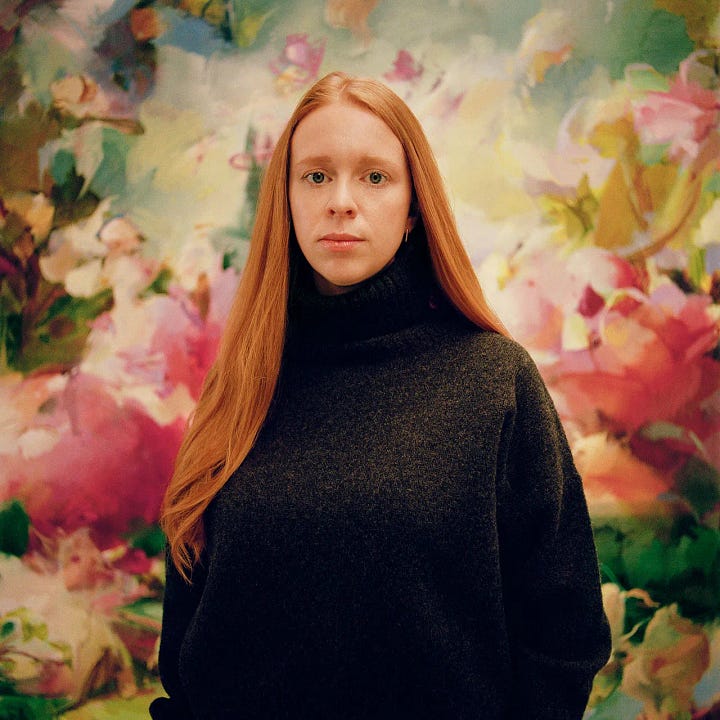
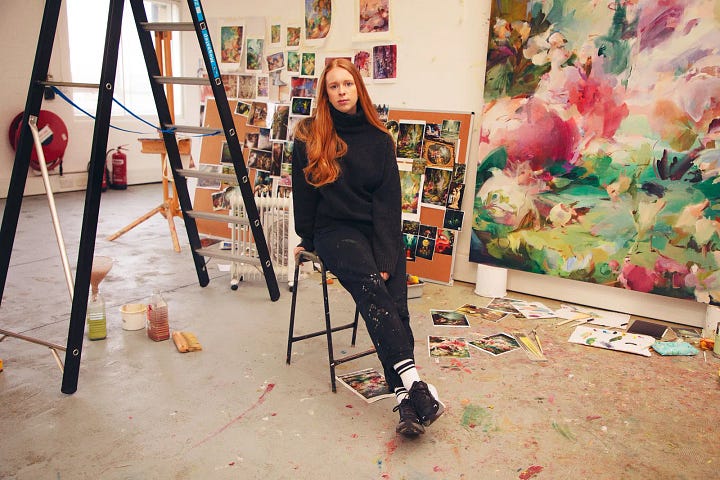
Flora Yukhnovich is a British contemporary artist known for her vibrant, large-scale paintings which reinterpret and engage with historical styles, particularly the Rococo period. Born in 1990, Yukhnovich's work blends a dynamic, almost abstract approach to colour and form with inspiration drawn from 18th-century Rococo. Inspired by French Rococo — a style epitomised by masters such as Jean-Antoine Watteau (1684–1721), François Boucher (1703–1770), and Jean-Honoré Fragonard (1732–1806) — Yukhnovich creates remarkable large-scale paintings that fluidly navigate the realms of representation and abstraction. Her work evokes the sensuous, playful aesthetic of Rococo while infusing it with a contemporary sensibility that feels fresh and expressive.
Yukhnovich's paintings often feature soft pastel hues, dramatic brushstrokes, and a certain dreamlike quality, using art historical references while allowing abstract, emotional elements to come through. She explores themes of femininity, beauty, and art history, often blurring the line between abstraction and figuration. Her ability to reinterpret classical art in a way that feels both reverent and innovative has made her a standout artist in the contemporary scene.
Since completing her MFA at the City & Guilds of London Art School in 2017, Yukhnovich has quickly gained attention in the art world. Her work has been exhibited internationally, and she has been featured in high-profile auctions, where her pieces have fetched impressive prices, reflecting the growing demand for her art among collectors.
Flora Yukhnovich and François Boucher: The Language of the Rococo creates a dynamic dialogue between the contemporary and the traditional, encouraging visitors to challenge their preconceptions. It asks how we can connect with the Rococo style in a modern context, explores parallels between 18th-century France and today, and examines how the presentation of art influences our interpretation of it. By combining the old with the new, the display invites a fresh re-evaluation of history.
“Flora Yukhnovich creates mesmerizing, painterly works that remind us of the enduring influence of the 18th century on our visual taste. I hope her work will introduce the Collection to a new generation of art enthusiasts who have yet to discover the delights of François Boucher, while also providing long-time admirers an opportunity to see the Collection through a new lens.” — Dr. Xavier Bray, Director of The Wallace Collection
Yukhnovich’s work engages with the traditional male gaze embedded in many of her sources of inspiration, exemplified by Fragonard’s iconic painting The Swing (1767) from the Wallace Collection. She subverts this trope by reinterpreting notions of femininity and gender through her innovative use of colour and form. Employing dynamic, rhythmic brushstrokes, Yukhnovich reclaims the visual language of the Rococo, infusing it with contemporary cultural references and a fresh, critical perspective.
“I couldn’t be more excited to collaborate with Xavier and the Wallace Collection! I’ve been visiting since my student days, immersing myself in the 18th century and studying Boucher’s paintings, which have profoundly shaped my practice. Seeing my work in conversation with the pieces that have inspired me for so long will be an incredible privilege.” — Flora Yukhnovich
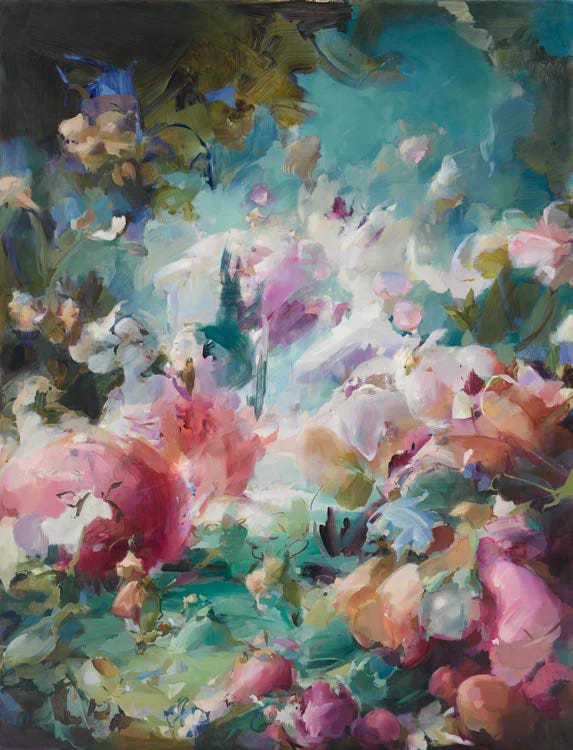
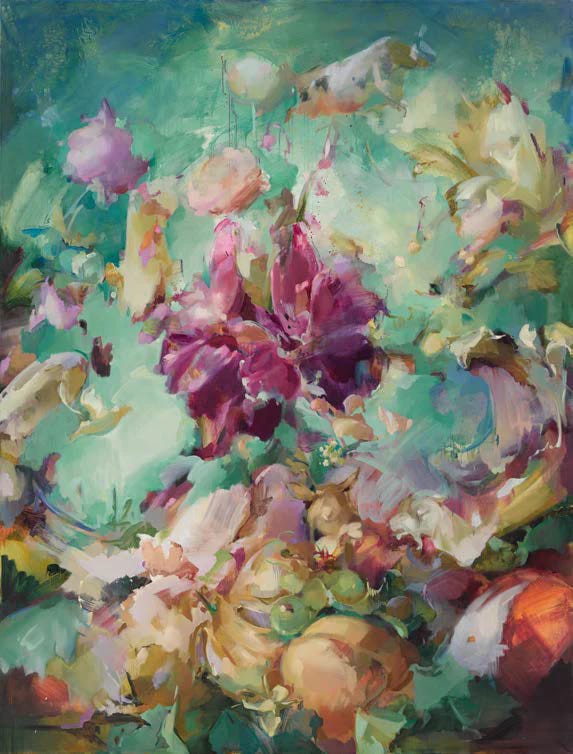
Folies Bergère is a captivating work that showcases her ongoing dialogue with art history and her ability to reinterpret classical aesthetics through a contemporary lens. Drawing inspiration from the hedonistic allure of the Rococo period and the vibrant, theatrical energy of Paris's famed Folies Bergère cabaret, the painting merges historical opulence with modern dynamism.
In Folies Bergère, Yukhnovich employs her signature semi-abstract style, characterised by sweeping, expressive brushstrokes and a luminous palette of pastels and rich tones. The work captures the decadence and vibrancy of performance spaces, where light, movement, and atmosphere converge. The title evokes a sense of indulgence, spectacle, and the blending of high and popular culture, much like the original cabaret that inspired it.
The piece is a testament to Yukhnovich’s skill in reimagining historical references — here nodding to both the theatricality of Rococo art and the modernist fascination with urban nightlife — creating a richly layered composition that invites viewers to immerse themselves in its sensual, almost dreamlike world. Folies Bergère continues Yukhnovich’s exploration of femininity, beauty, and the performative aspects of culture, offering a fresh and evocative perspective on these timeless themes.
A World of Pure Imagination exemplifies her signature ability to merge art historical motifs with contemporary themes, creating a lush, immersive experience for viewers. The title, evoking a whimsical and dreamlike realm, resonates with her exploration of the fantastical and the opulent, inspired by Rococo’s playful spirit and decorative excess.
In this painting, Yukhnovich employs her signature semi-abstract style, characterised by sweeping, gestural brushstrokes and a vibrant, kaleidoscopic palette. Hues of soft pastels interwoven with bursts of deeper, saturated tones suggest an ethereal, otherworldly landscape. The work blurs the boundaries between abstraction and figuration, inviting the viewer to interpret the scene through their own lens of imagination.
The title nods to the notion of escapism, a theme central to both the Rococo period — celebrated for its depictions of idyllic, utopian worlds—and contemporary society’s pursuit of fantasy and beauty. A World of Pure Imagination encapsulates Yukhnovich’s ability to breathe life into historical artistic traditions while embedding them with modern relevance, resulting in a composition that is as visually captivating as conceptually thought-provoking.
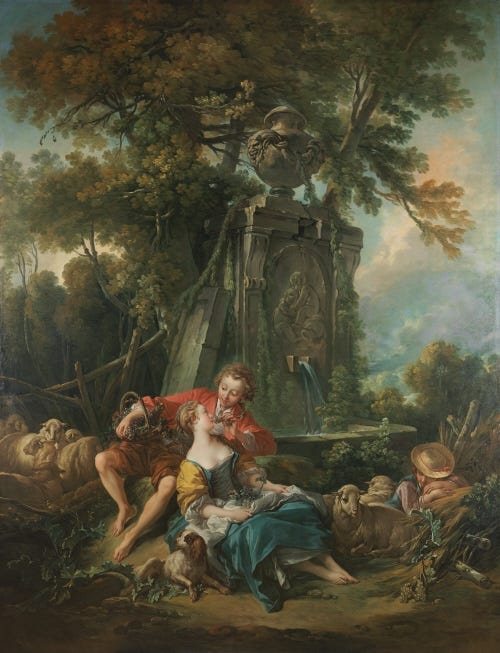
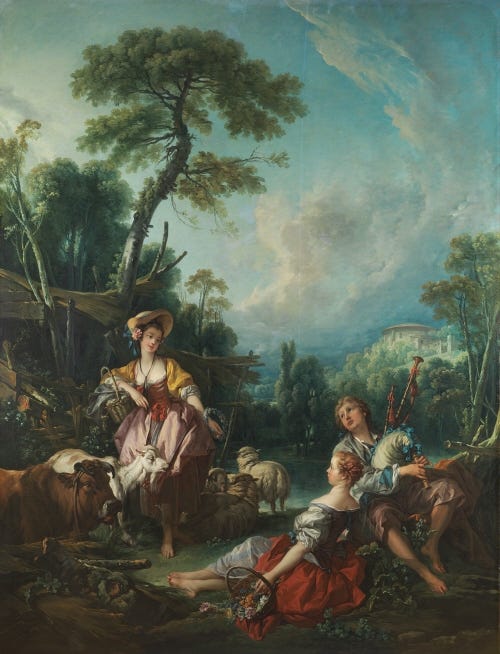
In contrast, Boucher’s paintings were presented in the Housekeeper’s Room, removed from their traditional frames and set against clean, white walls, echoing the aesthetic of contemporary art displays. Playful and theatrical, these works epitomise the Rococo — a richly decorative and exuberant style that captivated royal and aristocratic patrons across France and beyond from the 1730s.
Flora Yukhnovich and François Boucher: The Language of the Rococo invited visitors to challenge their preconceptions, explore how the Rococo resonates today, and reflect on how the context of display influences the interpretation and historical re-evaluation of art.
As always, thank you for reading.
FIN.






Great read thank you for introducing this artist. I think seeing how artists react to museum collections is fascinating, as you say there is a fresh interpretation but you can see the influences of the original artworks. Riotous stuff!
Love it. Wonderful work.